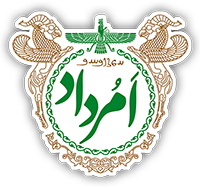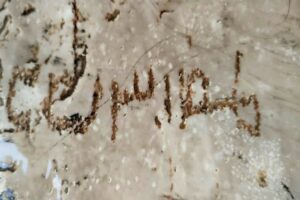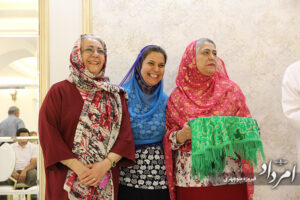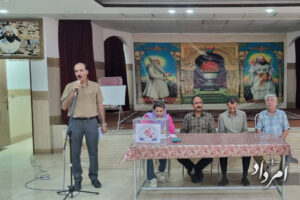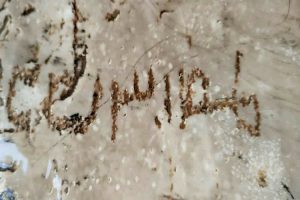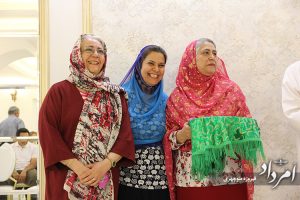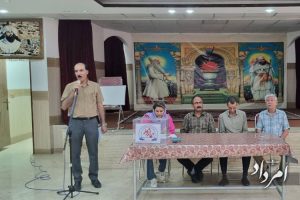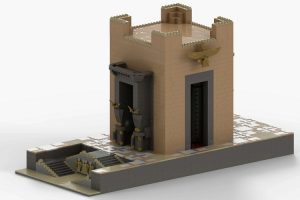The village of Shawaz, in Yazd province, has ancient inscriptions, also called “Esbaghteh” or “Hasbakhteh” petroglyphs. Figures of mythical and winged humans are more visible in the ancient works of Shawaz village and show very ancient beliefs that archeologists have little knowledge of.
One of the ancient habitats where traces of worshipping Mehr (Mithra) have been found, is a farm field called Esbaghteh. Esbaghteh is located near Shawaz village in the Poshtkooh area in the southwest of Yazd province, and it is known as an ancient village because it has an old tower and rampart. It was in that field that they suddenly found traces of Mithraism that we mentioned above. They are petroglyphs on a stone slab. The most important image is the broken cross. Other works that two foreign countries unfortunately looted during the WWII are proof of the existence of Mehr worshipers (followers of the Mehr religion) in that area and the spread of their beliefs.
Next to those engraves, there are images of mountain goats. Archaeologists assume the age of those images to be between 8000 and 9500 years BC. The war tools of arrows, bows, and lassos are also among the pictures, and they all remain from the Paleolithic era.
Anisa Aitizadeh, a university professor and senior expert in painting, who has conducted a comprehensive study of the pictures of Shawaz village, has considered the lateness of those paintings to be between 9500 and 8000 years BC. It also places the new illustrations of Shawaz in a period close to the first millennium BC. Two stone inscriptions from the middle period of Iranian history were found there, written in the first half of the 8th century AD.
Based on Ayatizadeh’s research, we know that the ancient petroglyphs of Shawaz, whose inscriptions can still be found, are scattered on ten rocks. The petroglyphs on other rocks have faded and are eroding.
Pictures of rams and mountain goats and half-human and half-animal mythical creatures are on the first rock. There is also an image of a cross and a ring (Mithraism). The second rock shows a man on a horse and a goat with crescent horns. An image of a dog is also drawn on top of the petroglyph. There is also a man lying down, and it is not clear what it means. On the 3rd rock also there are shapes of mountain goats and a human. There is also a picture of a human with wings.
The paintings of the fourth rock are geometric patterns such as circles and crosses and some vague illustrations. The image of a horned mountain goat is also visible on this rock. The ring of the seal, symbolic patterns, and several mountain goats are paintings of the fifth rock. Two mountain goats, who seem to be running away from the claws of a feline, have formed the images of the sixth and seventh rocks.
The image of the eighth rock is old, but there is an inscription in the Kufic script next to it. The ninth rock is an image of a dog and a mountain goat, and finally, the tenth rock is a symbolic figure in the shape of a circle, placed inside a circle with 7 dots. It is not clear what belief this symbolic image refers to. Ayatizadeh believes some of these images to be sacred and the cup displayed there would have been used for special ceremonies. The cups are 1 cm holes that Paleolithic humans created on the surface of rocks or stones. She writes that some natives still light candles next to the symbolic images.
Another critical point of the petroglyphs of Shavaz village is the mythical people with open hands and deformed legs who are unique and imaginary, like Jamoran.
